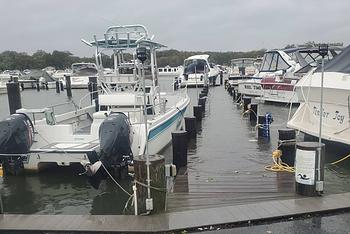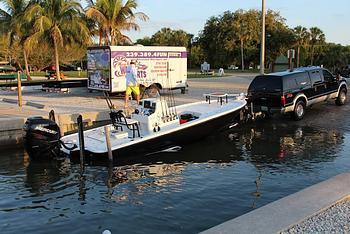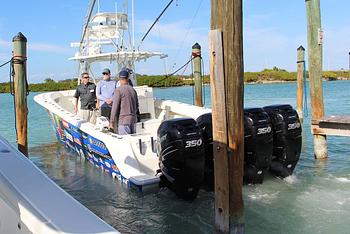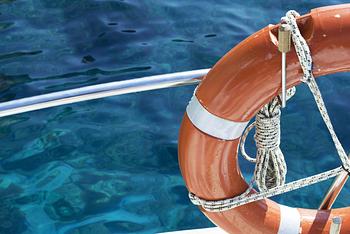The thought of buying a boat to spend weekends out in the marine world with family and friends is an exciting prospect. But you might feel some trepidation about actually learning to drive the boat. In fact, it’s perfectly normal to be daunted by the idea of working out what is a safe speed to drive a boat or how to maneuver or dock your boat. But just as you learned to drive a car with time and practice, you can learn to drive a boat just as well. In this article, we’ll focus on driving motorboats only, because handling a sailboat is a substantially different skillset. (See our guide to getting into sailing for more on that.)
We’ll take a look at the challenge in two different ways:
Top 10 Tips for Driving a Boat
There are many types of boats, and while they all require different skills to drive them, here are 10 basics rules that are fundamentally the same:
- Ensure someone is always keeping a lookout. It’s your responsibility to keep a good lookout at all times, or designate someone else on board to do so. Look out for other boat traffic, navigational signs, obstacles or any other hazard. Doing so is the No. 1 way to prevent a collision that could harm you or others, or seriously damage your boat. See our guide to Avoiding a Collision.
- Drive at a safe speed. Different than on the road, there are few speed restrictions at sea, although there will be zones where speed limits are enforced. It’s up to you as captain to ensure you’re driving your boat at a speed that ensures you don’t have a collision or cause to damage to other boaters, swimmers, wildlife, property, or the marine ecosystems. Take into account the visibility, sea conditions, other boat traffic, the water depth, the kind of boat you’re driving, and who else is onboard when deciding on a safe speed. See our Guide to Boat Speed Limits: How Fast You Should Be Going?
- Make sure you’re alert and focused at all times. While it’s tempting to have a few beers with lunch or when fishing with friends, it’s vital that you stay in full control and focused on driving your boat. In the same way that you wouldn’t operate a car under the influence of alcohol, don’t drink and drive your boat. You also want to be focused, not tired or stressed.
- Learn how to trim the engine. We’ll discuss how to trim the engine of your boat in detail below.
- Don’t face large waves head-on. There’s nothing worse than a bone-jangling boat ride as you bump relentlessly over large waves. To soften the ride for you and your passengers, slow down and approach steep waves at a 45 degree angle and you’re less likely to slam down the other side.
- Use neutral when maneuvering. We’ll talk more about How to Dock a Boat below, but a useful tip is to get used to putting the boat into neutral when maneuvering up to a dock or slip. By turning the wheel in neutral and then moving into gear afterwards you retain more control and will be able to maneuver more precisely.
- Only make small steering adjustments when traveling at high speeds. The faster your boat is going, the more sensitive the steering will become, so be sure you only make the smallest adjustments to the wheel until you learn how fast your boat reacts. Take any adjustments slowly and smoothly, or better yet, slow down a bit.
- Learn the navigational rules. In the United States, the Navigation Rules are published by the U. S. Government Printing Office, and are available in your local boating supply store, or you can download a full PDF of the Navigation Rules here. The Navigation Rules cover steering rules, sound signaling equipment and requirements, and a section on navigation lights.
- Take note of the weather and wind conditions ahead of time. Do your research before heading out on the water. You need to know what the weather is going to be like, the wind speeds, the tide times, and where you’re going to be cruising, so you can make informed decisions and not get caught in unfavorable conditions.
- Take a boaters education course. It’s highly recommended to take a boater’s education course, and these may in fact be locally compulsory to get your state boat license (see our guide to getting a boat license). They cover safe boating practices as well as navigational rules, but there are also practical boating courses you can take, from one-day introductory sessions, to multi-day certificates.

How to Drive a Boat: 5 Keys to Success
Before you set off
You should have a pre-departure checklist that you go through systematically each time you venture out on your boat. It should include what safety equipment to take onboard your boat as well as the following:
- Ensure everyone is aboard and wearing a life jacket
- Connect your kill switch (the engine safety cut off cord) to your life jacket
- Start the ignition, either with the key or by pressing the start button
- Remove all the lines from the boat to the dock and be sure they’re not left dangling in the water
- Put the boat in gear and move the throttle slowly forwards or backwards to exit the slip or pull away from the dock depending on whether you are heading out forwards or in reverse
- Put away any fenders hanging alongside the boat
How to steer a boat
Steering the wheel of a boat works in the same way as steering the wheel of a car—unless your boat has a tiller, in which case you’ll use a push pull motion to steer, turning the tiller away from the direction you want to go. The biggest difference when steering a boat is the effect of the wind, waves, and currents. When you steer a car, you know exactly what it’s going to do. Driving a boat takes a bit more skill to account for wind, waves, current, the shape of the hulls and the type of engine on the boat. Always make slow and steady movements and wait for a moment in between to see how the boat is responding.
How to dock a boat
Docking a boat is the part that makes most new boat drivers gulp the most. Getting your boat safely alongside the dock or slip without bumping into it (or another boat) can seem difficult—especially with an audience—but you’ll soon get the hang of how your boat moves and, with practice, develop pro skills. While lots of factors come into play when docking, such as the current or wind, where you’re docking, and the size or type of boat, there are four steps to take to aim toward a perfect landing:
- Get your boat ready to dock: Before you get to the slip or dock, prepare your boat by ensuring everything you need is ready. This includes tying your bow, stern and spring lines on whichever side you’ll be docking and making sure fenders are at the right height.
- Assess where you’ll be docking: Take a moment to assess the conditions and surroundings and make a plan before heading to dock. Are there other boats around? Which side of the boat will lie against the dock? How deep is the water? Which direction is the wind coming from? Is there a current? Will you be tying up to cleats or posts? Is there enough room to turn the boat around?
- Approach the dock slowly: Take the approach slowly and carefully and don’t make sudden adjustments or use unnecessary speed. Remember, if you do hit the dock it’s best to do so at a very slow speed! If you’re approaching a dock, do so at a 30- to 45-degree angle and drift in as slowly as conditions allow. Just before you reach the dock put the boat in reverse, point the engine to the dock and when the stern comes alongside, put the engine in neutral.
- Tie up to the dock: You can breathe a big sigh of relief when you’re safely alongside. But not before getting those lines secured. Keep the engine running so you can make quick adjustments if you get pushed off the dock or boat slip while tying up. Once the boat is secure, switch off the engine and make any small adjustments to the lines as is necessary.

How to trim a boat
Trimming a boat is something that takes some practice to perfect, but it’s an important skill to develop as driver of an outboard or sterndrive motorboat. So what does it mean to trim a boat? In short, trimming means tilting the engine forwards or backwards to move the propeller up or down, which in turn tilts the bow upwards or downwards. Many boats, even some cabin cruisers with inboard engines, are equipped with trim tabs on the trailing edge of the transom, which deflect the water flow and create a similar effect.
Changing of the angle of the engine or trim tabs affects how the boat travels through the water when underway. Most boats handle best when they’re running horizontal to their at-rest waterline, which will change when underway. So you need to trim the engine or tabs in relation to the transom to maintain a correct running angle. A trimmed boat provides the most comfortable ride and will make your boat more fuel efficient. While this might sound complicated, it really isn’t and you’ll soon start to learn how your boat drives best. This is how to trim a planing-hull motorboat;
- Begin in neutral and use the trim switch to tilt the engine down to its fullest.
- Put the boat into gear and gradually increase up to cruising speed.
- Slowly tilt the engine up (or the trim tab down) using the trim switch. You’ll feel the boat’s bow rise and the entire boat lift, as well as an increase in speed.
- You’ll know when you’ve trimmed too far up because your speed will start to drop, the engine’s RPM will rise significantly, and you may find the boat pounding the water.
- At this point, tilt the trim tabs or engine down slowly again until you find the sweet spot with maximum speed and lower RPM. This is the point where the boat is operating at its maximum efficiency and will offer the most comfortable ride.
How to stop a boat
Unlike your car, a boat doesn’t have a brake pedal and this can be one of the most nerve-racking parts for new boat drivers, especially as they’re entering port or trying to dock. Easing up on the throttle and coming to neutral will only slow your boat down and it’ll continue to glide forwards. To come to a complete stop you will need to shift into neutral momentarily, then put the boat slowly into reverse to counter the forward motion. Once you see that the boat has stopped moving forward alongside the dock, bring the boat back to neutral and you will have come to a complete stop.

How to Drive Different Types of Boats
There are many different types of boat, and while the basics apply to driving them all, there will be differences depending on whether it’s an outboard or inboard engine, the size of the boat, and of course the style of hull and windage caused by the deckhouse or cabin.
How to Drive a Pontoon Boat
Pontoon boats are well-loved for their ease of handling, and for that reason they make good beginner boats. There are some new ultra-fast pontoon boats on the market these days, but most of these sturdy float boats have low horsepower, which is perfect for getting to grips with handling. One of the keys to driving a pontoon boat is to take all maneuvers slowly, and make adjustments for wind and water movement. Generally those with big engines don’t corner well at high speed either. As pontoon boats have outboard engines, you’ll need to learn to trim the engine (see above), but you’ll soon get the feel for it.
How to Drive a Bass Boat
These compact, shallow draft, super-fast boats are popular fishing boats on lakes and inland waters. Many of them have all the gear you need for a day of fishing and duck hunting. Because of their speed, bass boats are designed to get on plane quickly, so this is where being able to effectively trim the engine will be even more important. Your boat might have a hand throttle or a foot pedal, and the latter allows you to keep both hands on the steering wheel when at higher speeds. Be sure to check your surroundings before accelerating and keep a watchful eye out for any obstacles or other boats.
How to Drive a Jon Boat
Not all Jon boats have tillers, but most do, making driving one them slightly different to their bass-boat cousins. An outboard engine with a tiller means you’ll be sitting at the stern using a handle to push or pull the engine and propeller, which in turn moves the boat left or right. In addition, the tiller will have the throttle on it, allowing you to accelerate or decelerate while maneuvering at the same time. Using a tiller is easy and intuitive, and one of the best ways to learn to drive a boat.
How to Drive a Large Center Console Boat
In fact, driving any boat over about 30 feet brings with it a whole different set of skills, and it’s highly recommended that you do some on-water training courses before setting off alone. Driving a larger boat like a powerful center console or an express cruiser involves understanding additional systems such as depth gauges, electronic navigation, and radar, as well as more technical knowledge on the operations of the boat including bow thrusters and bilges.



